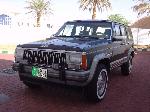crazyoffroader
NAXJA Forum User
- Location
- Seattle, WA
I have two high miles XJ's('89 w/240k, 91 w/238k) and I aws wondering which is "better" to put a stroker into?
I searched around for stroker projects, and they all seem to be Renix, is there a reason for this?
Both XJ's are in equaly bad shape, the '91 has a bad rod knock problem,
and the '89 is tired, real tired.
Any sugestions?
I searched around for stroker projects, and they all seem to be Renix, is there a reason for this?
Both XJ's are in equaly bad shape, the '91 has a bad rod knock problem,
and the '89 is tired, real tired.
Any sugestions?

